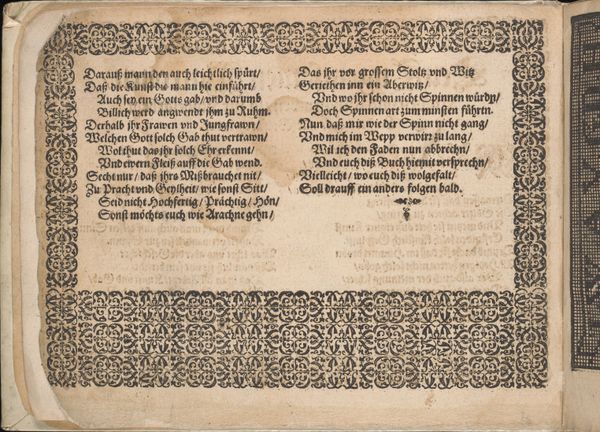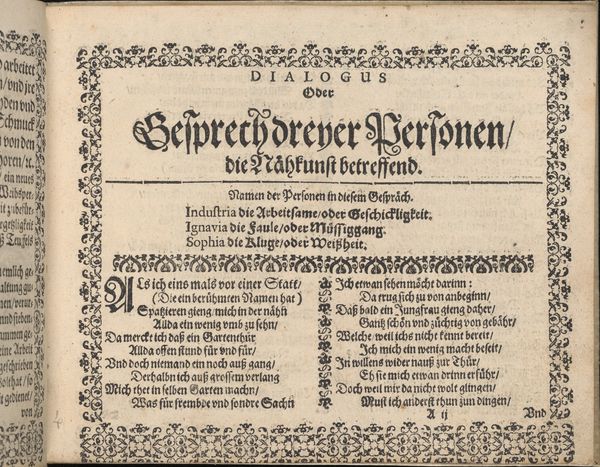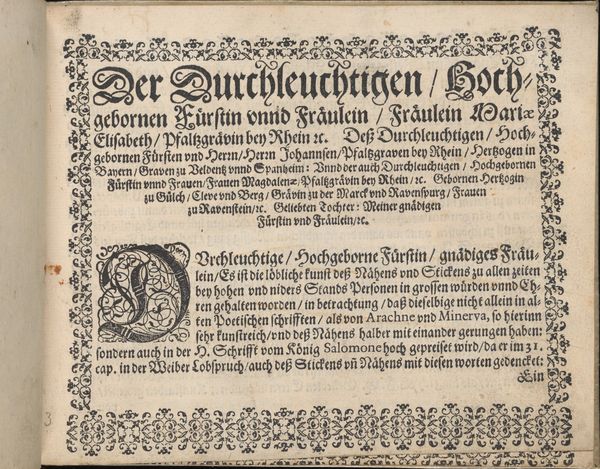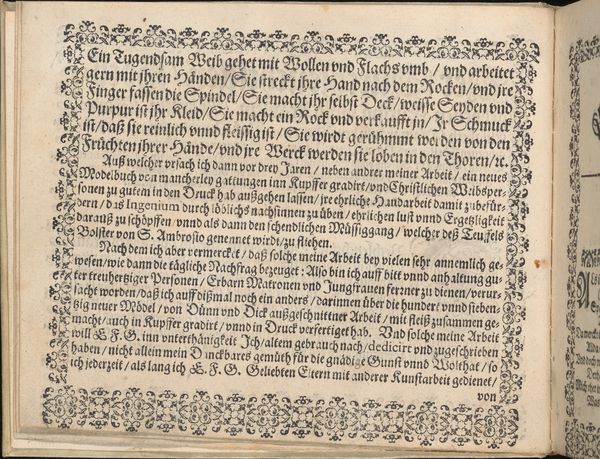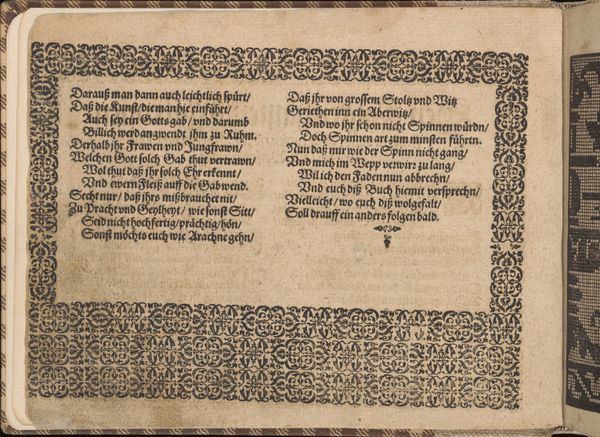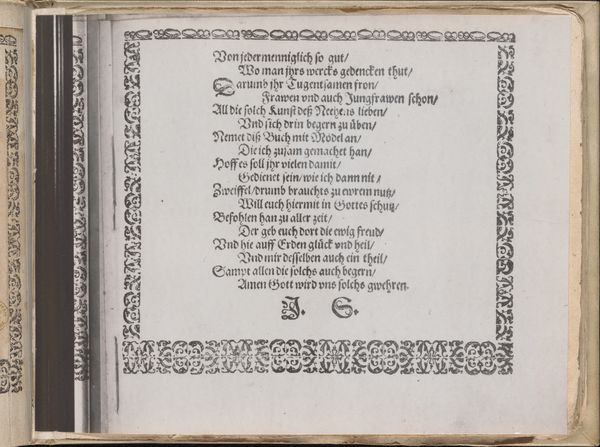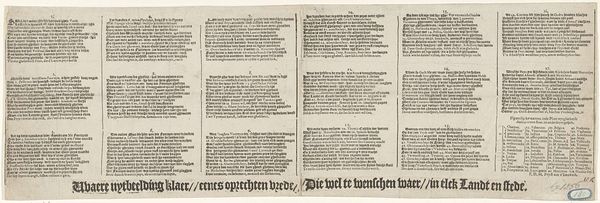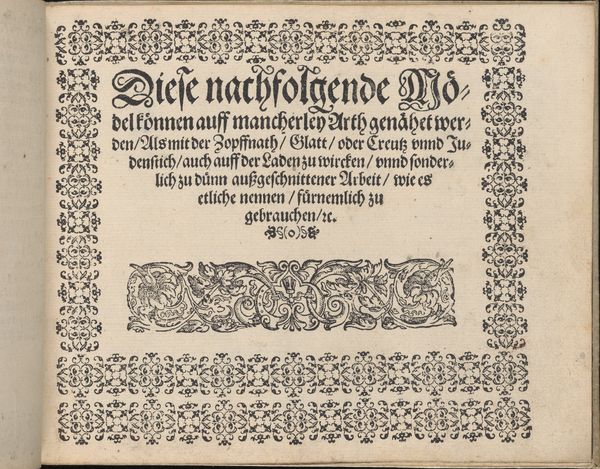
drawing, graphic-art, print, textile, paper
#
drawing
#
graphic-art
#
medieval
# print
#
book
#
textile
#
paper
Dimensions: Overall: 6 5/16 x 8 1/4 in. (16 x 21 cm)
Copyright: Public Domain
Editor: This is a page from "New Künstlichs Modelbuch" by Bernhard Jobin, created around 1600. It seems to be a print on paper, likely meant to be a model book for textile designs. The whole thing gives off a very serious, almost moralistic mood. What do you see in this piece, considering the context of its time? Curator: It's fascinating to consider this book within its social context. These "model books" weren’t just about patterns; they played a role in the evolving social hierarchy and moral codes. Notice the title; it references "virtuous matrons," implying the designs are meant for respectable women. However, the text, as the OCR reveals, critiques the weaver Arachne's pride, which challenged the Gods. This reminds us that art served as a site for negotiating social norms, and for the regulation of the display of artistry. Does it lead you to question how women artisans were perceived in early modern Europe? Editor: Definitely. So, these books were essentially policing what kind of artistic expression was deemed appropriate for women? Curator: Partly policing, yes, but also enabling. On one hand, the book aimed to steer creativity toward virtuous designs reflecting traditional roles and beliefs; while the creation of these prints, meant for public purchase, opens pathways for their commercial advancement, contributing to household economies and potentially enhancing women's social capital. In early modern Europe, sumptuary laws often regulated clothing based on social status, making the right patterns important. Considering that many elite women’s lives revolved around dressmaking and home decorations, could we see model books like sites for knowledge dissemination but also socio-political expression? Editor: I never thought of it that way. It makes me consider how seemingly simple art forms are charged with so much socio-political context! Curator: Exactly! Every art object exists within layers of power, patronage, and public reception that affect its creation and impact. Recognizing those forces lets us develop a fuller understanding. Editor: That really changes how I'll approach art history from now on. Thanks for this expanded context.
Comments
No comments
Be the first to comment and join the conversation on the ultimate creative platform.



